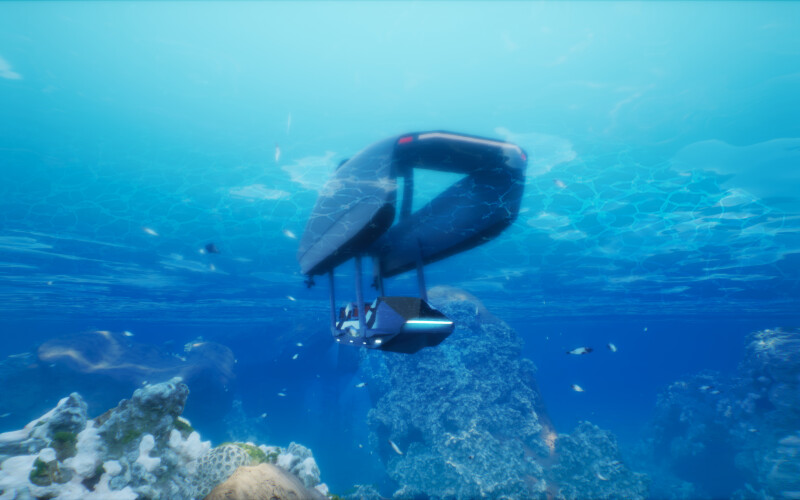Evoy and Platypus Craft have entered a Memorandum of Understanding (MOU) to formalize their collaboration in producing zero-emission, semi-submersible ecotourism boats. Under the agreement, Platypus will deploy twin Evoy Outboard Breeze 120-hp electric motor systems in their Yacht Edition craft. The companies expect the vessels to be on the water in early 2025.
"We are excited to join forces with Evoy, a company that shares our values and vision for a sustainable future. This partnership will allow us to push the boundaries of what is possible in marine exploration," said Franois-Alexandre Bertrand, Platypus Craft founder and CEO in a statement.
The Platypus semi-submersible concept consists of a series of boats with catamaran hulls that all contain a basket to lower five passengers below the water’s surface. The basket is equipped with breathing mechanisms, which the company states will eliminate the need for diving certifications, and allow passengers to observe underwater marine life. With a prototype already launched in the Mediterranean, Platypus states it has successfully demonstrated the boats’ use cases for ecotourism, as well as for marine research.
“By combining Evoy's powerful electric motor systems and Platypus Craft's innovative concept, it’s possible to explore nature without impacting it,” said Evoy co-founder and CEO Leif Stavøstrand.
Evoy states that its electric motor systems deliver multiple environmental benefits for aquatic ecosystems. Not only are they zero-emission, but they also eliminate pollution including fuel slicks and bilge water, the company noted. Electric motors are quiet, cutting noise pollution above and below the waves so the boats can move through the ocean without disrupting the passengers or the marine life they set out to see.

The Evoy twin Outboard Breeze 120+ configuration delivers two 63KW batteries, offering a top speed of 25 knots and a cruising speed of 15 knots above water. With the basket suspended, the boat can travel three to five knots, enabling passengers to observe and follow marine life unobtrusively over 30-80 nautical miles.
“Our partnership will enable enthusiasts to explore the wonders of the aquatic world without leaving a footprint, fostering a deeper connection between humanity and marine life,” said Bertrand.


.jpg.medium-cropped.800x500.jpg)


